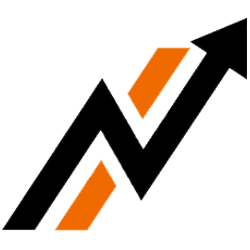Which On-Page Element Carries the Most Weight for SEO

In the world of SEO, there is a constant debate about which on-page element carries the most weight for boosting search engine rankings. Every website owner wants to know the golden ticket to climb to the top of the search results. Is it the title tags? The meta descriptions? The headers? Or perhaps the URL structure? Today, we will delve into this intriguing question and unravel the mystery behind the most influential on-page element for SEO.
Understanding On-Page SEO
Before we dive into the details, let’s first understand what on-page SEO is all about. On-page SEO refers to the practice of optimizing various elements on your web page to improve its visibility and rank higher in search engine results. These elements include title tags, meta descriptions, header tags, URL structure, and content.
Importance of On-Page Optimization for Search Engine Rankings
On-page optimization plays a crucial role in determining how search engines evaluate and rank your website. By optimizing these elements effectively, you can increase your chances of appearing in front of your target audience when they search for relevant keywords. In other words, on-page optimization is the foundation of any successful SEO strategy.
Key On-Page Elements for SEO
To determine which on-page element carries the most weight for SEO, let’s take a closer look at each one of them.
Title Tags: The Most Important On-Page Element
Title tags are one of the most critical on-page elements for SEO. They provide search engines with a concise and accurate description of what your web page is about. When creating title tags, it is important to include relevant keywords that accurately represent the content of your page. Additionally, title tags should be compelling and enticing to encourage click-throughs from search engine users.
Optimizing title tags involves striking a balance between SEO and user experience. It’s essential to include keywords, but not at the cost of making the title tag sound unnatural or spammy. A well-optimized title tag can significantly impact your search engine rankings and attract more organic traffic to your website.
Meta Descriptions and Their Impact on SEO
Meta descriptions are brief summaries that appear below the title tag in search engine results. While they do not directly influence search engine rankings, they play a crucial role in attracting users to click on your website. A well-crafted meta description can entice users to visit your site, increasing your click-through rate and potentially improving your organic rankings over time.
When writing meta descriptions, it’s important to provide a concise and compelling summary of your web page’s content. Including relevant keywords and a clear call-to-action can help increase click-through rates and improve the overall visibility of your website.
Header Tags and Their Role in On-Page Optimization
Header tags, also known as H1, H2, H3, etc., are HTML tags used to structure the content on your web page. These tags help search engines understand the hierarchy and organization of your content. Properly using header tags not only improves the readability of your page but also provides search engines with valuable information about the content’s context.
When optimizing header tags, it’s important to use them in a logical and hierarchical order. The H1 tag should be reserved for the main heading of your page, while H2 and H3 tags can be used for subheadings and sections. Including relevant keywords in your header tags can also help improve your search engine rankings.
URL Structure and Its Influence on Search Engine Rankings
The URL structure of your web page is another crucial on-page element for SEO. A well-structured URL can provide search engines with valuable information about the content of your page. It should be concise, descriptive, and include relevant keywords.
When optimizing your URL structure, it’s important to keep it simple and easy to understand. Avoid using long, complex URLs that contain unnecessary characters or parameters. Instead, use descriptive words and hyphens to separate different sections of your URL. A clean and user-friendly URL structure can improve the visibility of your website in search engine results.
Optimizing Content: The Backbone of On-Page SEO
While all the on-page elements mentioned above are essential for SEO, the content itself is the backbone of on-page optimization. High-quality, relevant, and engaging content is what search engines and users value the most. It’s important to create content that satisfies the search intent of your target audience and provides them with valuable information.
When optimizing your content, focus on creating comprehensive and well-structured articles that cover your topic in-depth. Include relevant keywords naturally throughout your content, but avoid keyword stuffing. Additionally, make sure your content is easy to read, visually appealing, and formatted properly with headings, bullet points, and images.
Conclusion
In conclusion, while all on-page elements are important for SEO, title tags carry the most weight when it comes to boosting search engine rankings. However, it is crucial to optimize all on-page elements effectively to maximize your website’s visibility and attract organic traffic. Understanding the impact of these elements and implementing best practices will help you take your SEO game to the next level and achieve better results in search engine rankings. So, start optimizing your on-page elements today and watch your website climb the search engine ladder.
